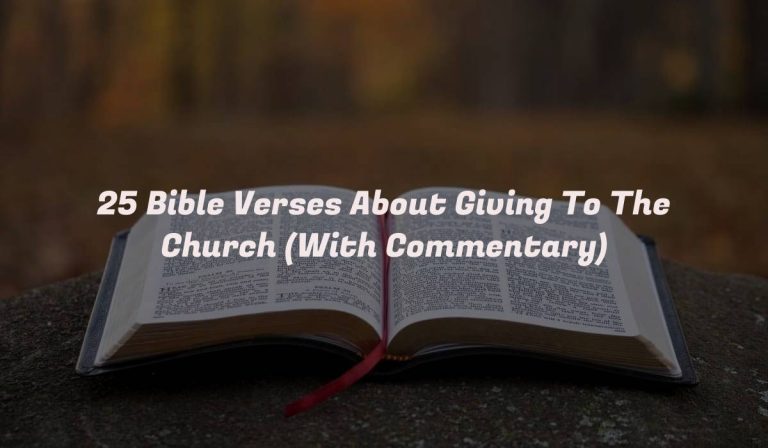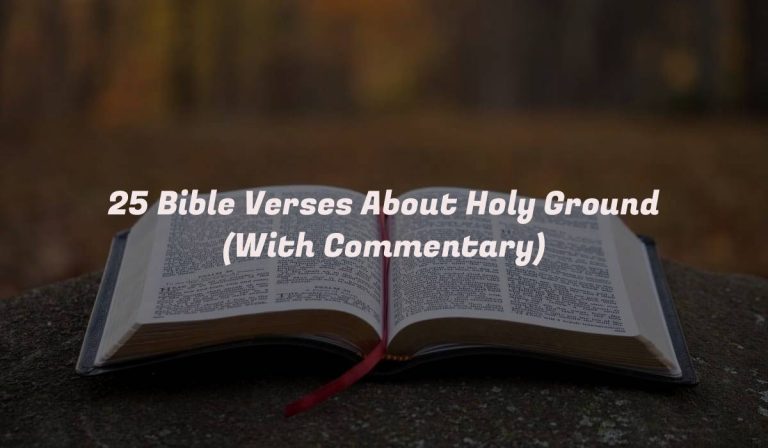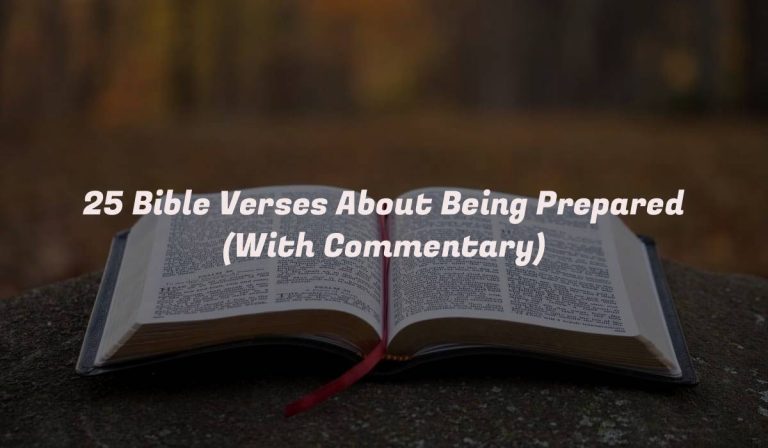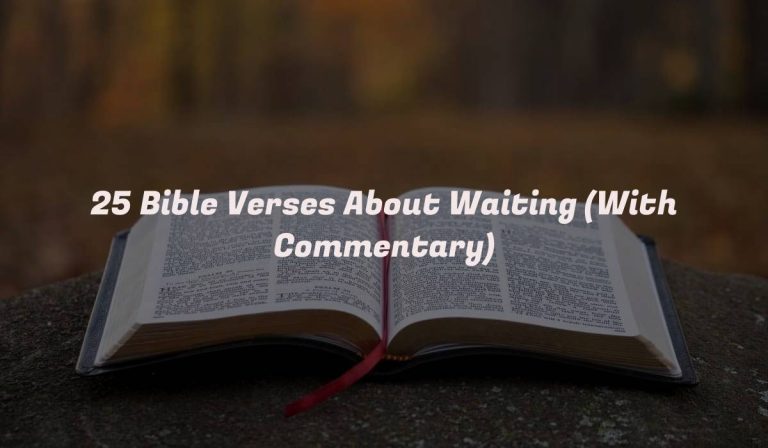Best 25 Bible Verses about Imagery (With Commentary)
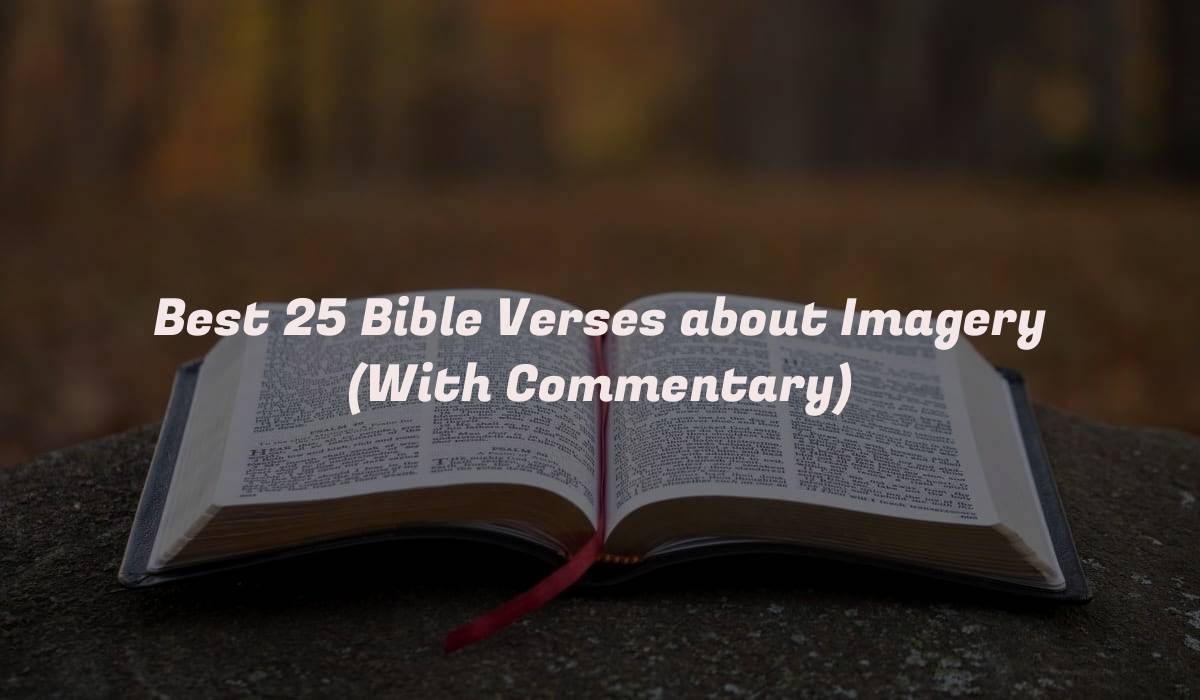
The power of imagery is undeniable. It has the ability to capture our imagination, evoke emotions, and convey profound truths. The Bible, a treasure trove of vivid and poetic language, is replete with verses that paint intricate pictures in our minds.
Let’s embark on a visual journey through these verses, appreciating the beauty and depth of the imagery they offer.
What Does the Bible Say About Imagery?
The Bible contains numerous instances of imagery, metaphor, and symbolism to convey its teachings and messages. Imagery is used to help readers better understand and relate to spiritual truths. Throughout the Bible, both the Old and New Testaments, various forms of imagery are employed to illustrate concepts, reveal God’s character, and communicate important lessons.
Imagery in the Bible serves several purposes:
- Symbolism: The Bible often employs symbolic language to represent deeper meanings. For instance, the imagery of light and darkness is used to illustrate the concepts of good and evil, truth and ignorance.
- Metaphors: Biblical authors use metaphors to convey complex ideas through relatable comparisons. Jesus frequently used parables, which are metaphorical stories, to teach moral and spiritual lessons.
- Visualizing Spiritual Truths: Imagery aids in visualizing abstract spiritual concepts. For instance, the imagery of a shepherd and his sheep is used to describe the relationship between God and His people.
- Aid to Memory: The use of vivid imagery helps in remembering important teachings and stories, allowing them to be passed down through generations.
- Evoke Emotions: Imagery can evoke strong emotional responses, allowing readers to connect deeply with the text and its messages.
- Prophetic Language: In the prophetic books, imagery is often employed to convey visions of future events or to symbolize the relationship between God and His people.
- Creation and Nature: The Bible’s descriptions of creation and the natural world often involve imagery, emphasizing the beauty and complexity of God’s handiwork.
It’s important to approach biblical imagery with an understanding of the cultural and historical context of the time when the texts were written. Additionally, interpretation of imagery can vary among different denominations and theological perspectives. Overall, biblical imagery enhances the depth and richness of the text, allowing readers to explore spiritual truths from different angles and gain a deeper understanding of God’s message.
Bible Verses about Imagery
Understanding Biblical Imagery
Before we embark on our journey through these verses, let’s establish a foundation. Imagery in literature involves using descriptive language to create mental pictures, often drawing parallels between the abstract and the tangible.
In the context of the Bible, imagery serves to make profound spiritual concepts relatable and tangible to readers. It bridges the gap between the divine and the human, allowing us to grasp the ineffable through the familiar.
Matthew 5:13
“You are the salt of the earth, but if salt has lost its taste, how shall its saltiness be restored? It is no longer good for anything except to be thrown out and trampled under people’s feet.”
This vivid imagery portrays believers as the salt of the earth. Salt serves as a seasoning and preservative, adding flavor and preventing decay. It highlights the transformative influence that followers of Christ can have in a decaying world. It reminds us to embrace our role in bringing positive change and preserving godly principles.
Psalm 42:1-2
“As the deer pants for streams of water, so my soul pants for you, my God. My soul thirsts for God, for the living God.”
The imagery of a thirsty deer longing for water reflects the deep yearning of the psalmist’s soul for God. It captures the intensity and desperation for a close relationship with the Almighty. It encourages us to pursue God passionately, recognizing that our souls find true fulfillment and satisfaction only in Him.
Isaiah 55:1
“Come, everyone who thirsts, come to the waters; and he who has no money, come, buy and eat! Come, buy wine and milk without money and without price.”
This verse employs the imagery of thirst and hunger to invite all who are spiritually deprived and in need to come to God. It paints a picture of abundant provision, emphasizing that God’s grace and blessings are freely available to all who seek Him. It invites us to partake in the spiritual nourishment and satisfaction that God offers.
Psalm 27:1
“The LORD is my light and my salvation—whom shall I fear? The LORD is the stronghold of my life—of whom shall I be afraid?”
This powerful imagery depicts the Lord as our guiding light and our source of deliverance. It illustrates that with God as our stronghold, we need not fear any earthly threat or adversity. It reassures us of God’s protective presence in our lives, empowering us to face challenges with courage and faith.
Revelation 3:20
“Behold, I stand at the door and knock. If anyone hears my voice and opens the door, I will come in to him and eat with him, and he with me.”
The image of Jesus standing at the door and knocking symbolizes His desire for a personal relationship with us. It portrays His patient and loving pursuit of our hearts. By opening the door to Him, we invite Him into our lives to commune with us intimately. It represents the invitation to experience fellowship and spiritual nourishment with the Savior.
Psalm 1:3
“He is like a tree planted by streams of water that yields its fruit in its season, and its leaf does not wither. In all that he does, he prospers.”
This imagery compares a person who delights in God’s law and meditates on it day and night to a thriving tree. Just as the tree’s roots draw sustenance from the flowing water, a godly person flourishes spiritually, bearing fruit and experiencing God’s favor. It illustrates the importance of grounding ourselves in God’s Word for spiritual growth and prosperity.
Isaiah 41:10
“Fear not, for I am with you; be not dismayed, for I am your God; I will strengthen you, I will help you, I will uphold you with my righteous right hand.”
This verse utilizes imagery to offer reassurance and comfort. It paints a picture of God’s faithful presence and support, holding us with His righteous hand. It reminds us that in times of fear or discouragement, we can find strength, help, and security in our relationship with God.
Psalm 46:1
“God is our refuge and strength, a very present help in trouble.”
This imagery depicts God as a secure refuge and a source of strength. It portrays Him as our ever-present help, available to us in times of trouble and distress. It encourages us to turn to Him as our ultimate source of comfort and stability, knowing that He is always there to support and protect us.
Matthew 6:28-29
“And why are you anxious about clothing? Consider the lilies of the field, how they grow: they neither toil nor spin, yet I tell you, even Solomon in all his glory was not arrayed like one of these.”
This verse draws on the imagery of lilies in the field to illustrate God’s care and provision. It highlights the beauty and splendor that God bestows upon nature, surpassing even the grandeur of King Solomon’s attire. It teaches us to trust in God’s faithfulness and not to worry, knowing that He will provide for our needs.
Isaiah 53:6
“All we like sheep have gone astray; we have turned—every one—to his own way; and the LORD has laid on him the iniquity of us all.”
The imagery of sheep going astray emphasizes the universal human tendency to wander from God’s ways and pursue our own desires. It acknowledges our sinful nature and rebellion against God. The verse also points to Jesus, the Messiah, who bore the weight of our sins, offering redemption and reconciliation.
Luke 15:4-7
“What man of you, having a hundred sheep, if he has lost one of them, does not leave the ninety-nine in the open country, and go after the one that is lost, until he finds it?”
This parabolic imagery portrays the compassionate heart of the Good Shepherd, who diligently seeks out the lost sheep. It exemplifies God’s relentless pursuit of every lost soul, highlighting His love, grace, and desire for reconciliation. It reminds us of our value and the lengths to which God will go to bring us back into His fold.
Psalm 119:105
“Your word is a lamp to my feet and a light to my path.”
This metaphorical language depicts God’s Word as a guiding light in our lives. Just as a lamp illuminates the path before us, God’s Word provides direction, wisdom, and understanding. It serves as a source of illumination in the darkness, helping us navigate life’s challenges and make choices aligned with God’s will.
Isaiah 1:18
“Come now, let us reason together, says the LORD: though your sins are like scarlet, they shall be as white as snow; though they are red like crimson, they shall become like wool.”
The imagery of scarlet sins becoming white as snow symbolizes the transformative power of God’s forgiveness and redemption. It illustrates His ability to cleanse us completely, washing away the stain of sin and making us pure and blameless in His sight. It demonstrates the depth of His grace and the restoration available through Christ.
Matthew 13:3-8
“And he told them many things in parables, saying: ‘A sower went out to sow. And as he sowed, some seeds fell along the path, and the birds came and devoured them. Other seeds fell on rocky ground, where they did not have much soil, and immediately they sprang up, since they had no depth of soil, but when the sun rose, they were scorched. And since they had no root, they withered away. Other seeds fell among thorns, and the thorns grew up and choked them. Other seeds fell on good soil and produced grain, some a hundredfold, some sixty, some thirty.’”
This parable employs agricultural imagery to teach about the different responses to the message of the kingdom of God. The seeds represent the Word of God, while the various types of soil depict different conditions of the human heart. It emphasizes the importance of cultivating a receptive and fertile heart to receive and bear fruit from the Word of God.
Revelation 21:2
“And I saw the holy city, new Jerusalem, coming down out of heaven from God, prepared as a bride adorned for her husband.”
This striking imagery portrays the new Jerusalem as a bride prepared for her husband. It symbolizes the ultimate union between Christ (the bridegroom) and His Church (the bride). It represents the future glory and perfection of God’s kingdom, filled with beauty, joy, and intimacy.
Romans 6:4
“We were buried therefore with him by baptism into death, in order that, just as Christ was raised from the dead by the glory of the Father, we too might walk in newness of life.”
This metaphorical language illustrates the spiritual transformation that occurs through baptism. It likens our immersion in water to burial with Christ, symbolizing the death of our old selves and our identification with Christ’s death. Rising from the water represents our new life in Christ, infused with His resurrection power and called to live a transformed and renewed life.
John 10:11
“I am the good shepherd. The good shepherd lays down his life for the sheep.”
This vivid imagery presents Jesus as the good shepherd who sacrificially cares for and protects His sheep. It reveals His deep love and willingness to lay down His life for the flock. It conveys the selflessness, compassion, and guidance that Jesus provides as our Shepherd, emphasizing His role in leading us and providing eternal security.
Jeremiah 17:7-8
“Blessed is the man who trusts in the LORD, whose trust is the LORD. He is like a tree planted by water, that sends out its roots by the stream, and does not fear when heat comes, for its leaves remain green, and is not anxious in the year of drought, for it does not cease to bear fruit.”
This beautiful imagery depicts a person who trusts in the Lord as a flourishing tree planted by a water source. It symbolizes the stability, nourishment, and continuous productivity that comes from placing our trust in God. It encourages us to anchor ourselves in Him, finding confidence and resilience even in challenging circumstances.
Psalm 119:130
“The unfolding of your words gives light; it imparts understanding to the simple.”
This figurative language portrays God’s Word as a source of enlightenment and wisdom. It likens the process of understanding His Word to the gradual unfolding of light, bringing clarity and insight. It underscores the transformative power of studying and meditating on Scripture, enabling even the simplest of minds to grasp profound spiritual truths.
Proverbs 4:18
“But the path of the righteous is like the light of dawn, which shines brighter and brighter until full day.”
The imagery of the light of dawn represents the life and progress of the righteous. Just as the morning light gradually brightens and dispels darkness, the way of the righteous becomes increasingly radiant and filled with God’s illumination. It highlights the trajectory of a godly life, marked by increasing righteousness, understanding, and spiritual maturity.
Isaiah 61:3
“To grant to those who mourn in Zion— to give them a beautiful headdress instead of ashes, the oil of gladness instead of mourning, the garment of praise instead of a faint spirit; that they may be called oaks of righteousness, the planting of the LORD, that he may be glorified.”
This powerful imagery describes the divine exchange that takes place in the lives of those who mourn and seek God. It portrays the transformation from sorrow to joy, ashes to beauty, and a faint spirit to praise. The metaphor of “oaks of righteousness” conveys strength, stability, and the honoring of God through transformed lives.
Matthew 13:44
“The kingdom of heaven is like treasure hidden in a field, which a man found and covered up. Then in his joy he goes and sells all that he has and buys that field.”
This parable uses the imagery of a hidden treasure to depict the value and significance of the kingdom of heaven. It emphasizes the surpassing worth of knowing and experiencing God’s kingdom. The response of the man, who joyfully sacrifices everything to obtain the field, highlights the commitment and wholehearted devotion required to embrace the kingdom’s eternal riches.
Proverbs 25:11
“A word fitly spoken is like apples of gold in a setting of silver.”
This poetic imagery compares a well-timed and appropriate word to the beauty and preciousness of golden apples set in a silver display. It underscores the impact and value of words spoken with wisdom, grace, and relevance. It encourages us to use our words thoughtfully and purposefully, recognizing their potential to bring encouragement, healing, and positive influence.
Romans 12:2
“Do not be conformed to this world, but be transformed by the renewal of your mind, that by testing you may discern what is the will of God, what is good and acceptable and perfect.”
The imagery of transformation emphasizes the process of renewing our minds to align with God’s will. It conveys the need to reject conformity to worldly patterns and embrace a renewed thought pattern rooted in God’s truth. It speaks of the ongoing journey of inner change and discernment that enables us to live in accordance with God’s good, acceptable, and perfect will.
Conclusion
In our exploration of imagery in the Bible, we’ve journeyed through verses that use the power of language to bridge the gap between the seen and the unseen.
The Bible’s imagery isn’t a mere literary device; it’s a window into the heart of God and an invitation to experience His truths in ways that resonate deeply.
As you continue your spiritual journey, may you find inspiration in these verses and dive deeper into the ocean of biblical imagery, discovering new facets of God’s beauty and grace along the way.


